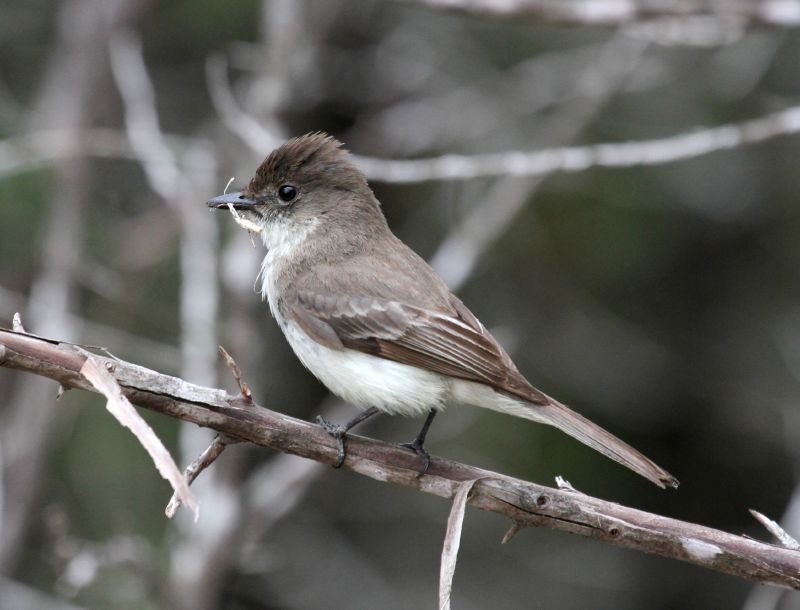Eastern Phoebe
A species of Phoebes Scientific name : Sayornis phoebe Genus : Phoebes
Eastern Phoebe, A species of Phoebes
Botanical name: Sayornis phoebe
Genus: Phoebes
Content
Description People often ask General Info
Description
The eastern Phoebe is a familiar songbird in North America. It often nests in urban areas, particularly around buildings and bridges. It can be seen on exposed perches, constantly moving its long, dark tail. The species is partially migratory, with the northern populations migrating south. They return early in spring, being one the first messengers of warmer weather.
Size
14 - 17 cm
Life Expectancy
9 years
Nest Placement
Building
Clutch Size
2 - 6 eggs
Incubation Period
1 - 2 broods
Number of Broods
15 - 16 days
Nestling Period
16 - 20 days
Feeding Habits
Eastern Phoebe predominantly consumes flying insects, including wasps, beetles, dragonflies, butterflies, moths, flies, midges, cicadas, and wild bees. Its diet also comprises ants, grasshoppers, spiders, ticks, hairworms, and millipedes. Additionally, eastern Phoebe occasionally eats small fruits, seeds, and in rare instances, small fishes.
Habitat
Eastern Phoebe primarily choose woodland areas adjacent to water bodies, often utilizing human-made structures and natural features for nesting. They prefer an understory of woody vegetation for nesting camouflage and perching. While associated with water during breeding, their migration habitat expands to various wooded landscapes. In winter, they inhabit deciduous forests, typically at edges or near clearings.
Nest Behavior
The female eastern Phoebe solely builds the nest over 5–14 days, often with the male nearby. Nest building starts before egg-laying, which happens in spring to early summer. Parents both care for the eggs and young, and nests can be reused in subsequent seasons.
Nest Characteristics
Eastern Phoebe typically nest in niches or under overhangs, within 15 feet of the ground. The female constructs the nest with mud, moss, grass, and animal hair, which may adhere to vertical walls or rest on firm foundations. The nest measures about 5 inches across and has a 2.5-inch-wide, 2-inch-deep cup.
Dite type
Insectivorous
People often ask
General Info
Feeding Habits
Bird food type
Bird Feeder Type

Platform
Behavior
Eastern Phoebe exhibit a distinctive pattern of perching attentively, often enlivening the scene by twitching their tails. This behavior predicates their hunting technique, where they launch from low perches with agile wingbeats to catch insects mid-flight—a behavior known as 'sallying.' They typically favor returning to the same or adjacent perches. Eastern Phoebe also employ hovering to forage, picking off insects or seeds from foliage, albeit this is less common. As solitary creatures, eastern Phoebe are rarely found in groups, and mated pairs do not generally socialize. The males are known to sing a scratchy, bifurcated song during the spring, and they are territorial against their own kind, but are more tolerant of other species. Nest defense is a shared task, with the female often taking a leading role against various predators.
Scientific Classification
Phylum
Chordates Class
Birds Order
Perching birds Family
Tyrant flycatchers Genus
Phoebes Species
Eastern Phoebe 